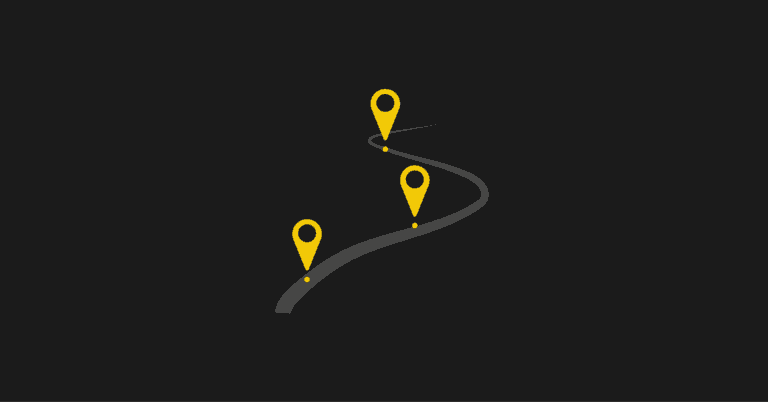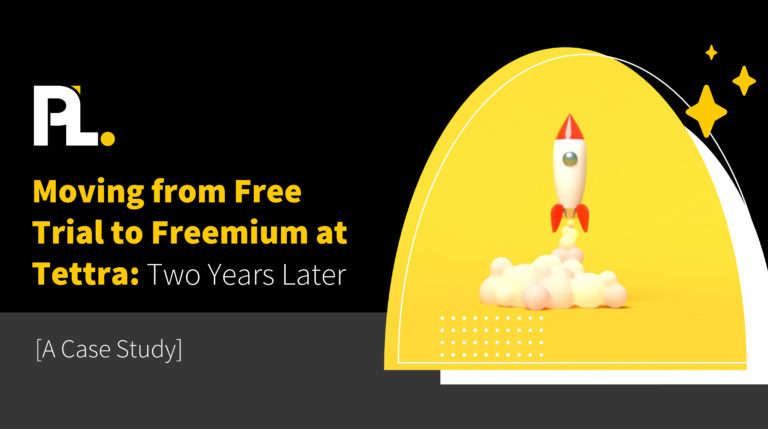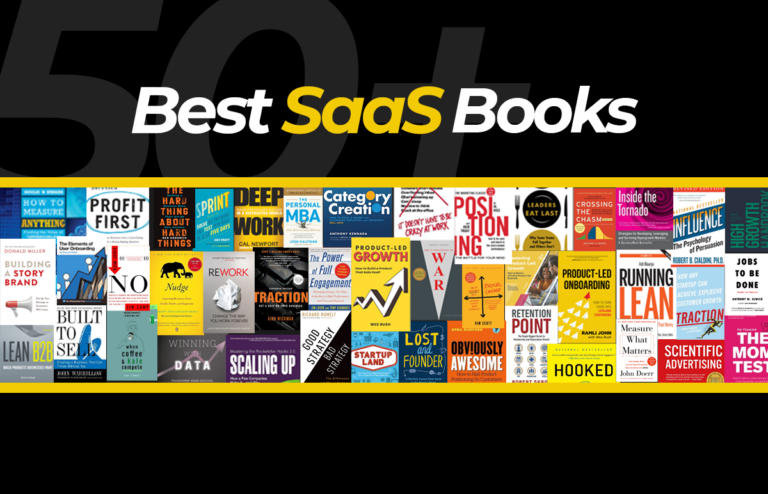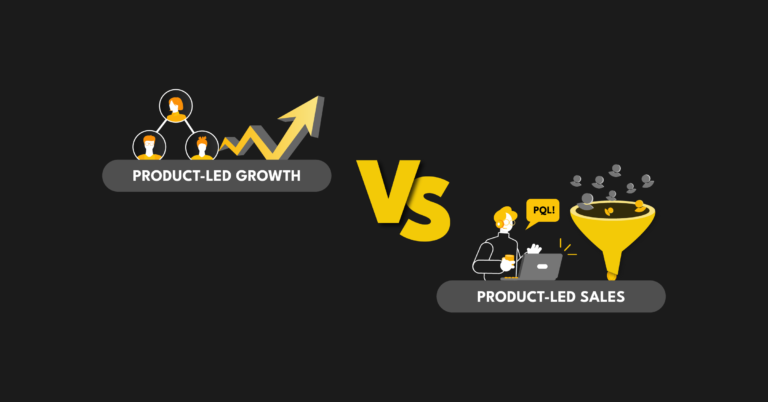A defined user adoption strategy is often the difference between driving growth and falling short of your goals. Companies with high user adoption rates tend to see more users adopting the product than leaving it.
And if a company has a relatively low user adoption rate, it indicates that many users are adopting the product short-term and then jumping ship.
What is user adoption?
User adoption, otherwise known as user onboarding, is a process where new users adopt a product (or service) and commit to using it. They’ve left their previous product behind and have actively decided to adopt a new system that is much more efficient and effective at helping them achieve their goal.
Why is user adoption important in SaaS?
“User adoption” isn’t a buzzword. It’s critical to the short and long-term success of your SaaS business. It increases the number of users who actually use the product after signing up, boosts retention, and ensures that users receive something of value in exchange for their money.
User adoption also impacts a variety of metrics that measure the overall health of your business:
- Customer acquisition cost (CAC)
- Customer lifetime value (CLV)
- Average revenue per user (ARPU)
- Customer churn rate
The right user adoption strategy will:
- Improve your product’s free trial conversion rate.
- Boost user engagement.
- Accelerate account growth.
So, how can you make sure more users are sticking with your product rather than abandoning it after signing up?
Below, you’ll find the best user adoption strategies to drive product adoption and engagement from the moment a user signs up for your product (you’re welcome!).
- Make onboarding a continual process.
- Go beyond UI design patterns.
- Identify your activation criteria.
- Organize your efforts around areas of business value.
- Use retention as an exercise in proactivity.
- Make the onboarding period ring-fenced.
- Avoid working in onboarding silos as you grow.
7 Proven user adoption strategies to drive product adoption
Something as important as a user adoption strategy deserves your full attention. You don’t want to wing it and hope for the best or rely on a strategy that hasn’t generated the best results to date. You want to implement a proven strategy for driving product adoption. Here are seven options to consider.
#1: Make onboarding a continual process
Don’t make the mistake of assuming that because somebody signed up for your product, they’re going to stay forever. That’s not the case. In all likelihood, they’re trialing several of your biggest competitors to see which one they like best.
Onboarding is vital to scaling your SaaS company and it shouldn’t end at the point of sign-up. You need to think of user adoption as a continual process.
What do I mean by continual?
Well, your onboarding process cannot remain stagnant. A ‘one-size-fits-all’ approach does not apply here in the slightest. As you continue to scale and acquire various types of new customers, your initial onboarding must adapt and evolve alongside your company.
There is no final stage to user onboarding because realistically, you’ll never stop working on it. This is because your company and everything that goes with it, is continuously evolving. So, your onboarding must be continual too. This goes for existing customers too.
Take a look at the diagram below…
Do you see how user onboarding must be a continuous thing? It’s like a cycle, and you must keep it moving and make improvements by leveraging tools like data integration software.
#2: Go beyond UI design patterns
One of the best user adoption strategies to embrace is understanding that good product onboarding is about far more than UI design patterns.
There are three core competencies of any successful SaaS user onboarding experience:
UI Design Patterns
So, what does a good UI design pattern even look like?
Here’s an example:
This is an example of the initial onboarding journey of Anchor, the podcast app. The sign-up process is very easy and doesn’t take much time at all, which is exactly what you want. Remember that people are busy, they don’t want to spend forever filling out personal details to sign-up for your product. They want quick and easy access, so give it to them.
Anchor also gives users a smooth onboarding experience with zero friction. This is so important on day one of user onboarding. If you want users to stick around, make sure you implement simple and efficient user adoption strategies like these.
Contextual Content
You must think about how each of the three core competencies contributes to your user adoption process. Of course, you need to deliver the highest-quality content that you possibly can. It helps if you cabn offer some mixed variations of content too such as articles, webinars, demos, videos, and documentation – all of which explains how users can get the most from your product.
Now… having all of this content is great. But what happens when a new user needs answers while in the middle of using your product? Can you really expect them to go searching through your help center? Probably not.
What’s the solution?
You must provide users with support in context. This means delivering contextual content at a specific time and in a specific place.
How and where a customer encounters your content is just as important as the content itself.
Contextual Communication
When it comes to contextual communication, there is one rule and one rule only…
It’s got to be the right message, at the right time, in the right place.
Let’s say a new user has just signed up for your product. They’re itching to get started but there’s one problem – they have no idea how to navigate your app.
The right message at this point of onboarding would be something like a short orientation video appearing in-app, on-screen, and at the right time. The user can watch the video and quickly learn how to navigate the app. It’s the right message, at the right time, in the right place. This is an example of contextual communication done right.
Take for example what students see when they first log into our training program. A welcome message from Wes Bush, CEO of ProductLed, greets them. This is the perfect communication for engaging first-time students.
#3: Identify your activation criteria
The next tip on our list of the best user adoption strategies is to find your activation criteria ASAP.
Your activation criteria are the actions customers take that improve the likelihood of those customers sticking around in the second month (and beyond).
Here are a few brief examples of activation criteria for some well-known companies…
- Anchor: Publish your first podcast on your first visit.
- Intercom: Install your messenger and send your first visitor an auto message in the first three days.
- Twitter: Follow 30 people and have 10 of them follow you back.
- Facebook: Friend seven people in the first 10 days.
What do all of these activation criteria (or Aha! moments) have in common?
Well, they each offer value to the user right away. Therefore, these companies are more likely to retain new users.
#4: Organize your efforts around areas of business value
There are four areas of business value that fit into the C.A.R.E Model.
Each of the four areas are simple but very important.
To ensure you provide the best possible onboarding process, you can use the C.A.R.E Model as a guide to employ the three core competencies we discussed above (Contextual Content, Contextual Communication, and UI Design Patterns).
Below, you’ll see a straightforward sample of what an end-to-end onboarding experience may look like.
You can use this as a loose guide to help you plot the steps and tactics a customer can take. This may help you visualize your onboarding process and it’s one of my favorite user adoption strategies when planning the onboarding process.
However, the C.A.R.E model can also be used to help you plan other areas of your company’s structure and processes.
Here are a few ideas you might want to try using the C.A.R.E Model:
- Your reporting structure.
- Your quarter.
- Where you sit.
- What you measure.
- What you work on next.
#5: Use retention as an exercise in proactivity
A vital user adoption strategy to keep in mind is the idea of the "danger zone."
This is when a user gradually (or quickly) begins to lose interest in your product. You can tell that a user has lost some interest because they stop logging in as much as they used to. Their average time spent engaging with your product declines, hence calling it the "danger zone."
The graph below shows churn rates. Take a look at how the new sign-up users and regular customers engage with the product versus the lost customer.
As you can see, the lost customer began strong but then, over time, they stopped logging in as much until they eventually canceled their membership.
The yellow area on the graph is the danger zone. This is the time in the user journey when you need to up your game. You’ve got to react and re-engage with users so you can bring them back from falling deeper and deeper into the danger zone.
Better yet, reach those users before they hit the danger zone. This is the best possible time to invest in retention so that the user keeps coming back for more because your product keeps giving them value and essentially, a reason to stay.
Don’t wait for customers to stop using your product before doing something about it.
#6: Make the onboarding period ring-fenced
When you lock down a new user, it’s tempting to let them know everything about your product and company. Don’t do that!
You need to choose what you talk about to your customers very carefully, especially during the onboarding period. There’s no need to share every little detail with new users. Bombarding new users with lots of messages and information such as everything you ship, new landing pages, features, and so on, can actually be the reason you lose customers.
You need to drive the behaviors that matter but only when they matter.
Focus on the specific actions that trigger conversion and activation. The rest can wait.
#7: Avoid working in onboarding silos as you grow
As your company and product scale, your onboarding "to-do" list grows alongside it.
Here’s an example of all the things your customers may experience when they begin using and engaging with your product.
All of the components you see above contribute to the user’s onboarding experience.
In most cases, different components or "tasks" will be assigned to different departments as your company scales (see a sample structure of this below).
As everything continues to grow and expand, communication and collaboration between different teams within the company becomes increasingly difficult. If you don’t get things under control quickly, this lack of communication can cause quite a mess.
How can you resolve this problem? Or, better yet, avoid it completely?
Create an onboarding team!
This team should consist of people from all of the necessary departments needed to help make sure the onboarding experience is as smooth as possible.
I hope you found these user adoption strategies helpful and that they help you to create a fluent and successful user adoption process where more customers are retained with each passing month!
How to Measure the Success of a User Adoption Strategy
It’s one thing to assume that your user adoption strategy is working. It’s another thing entirely to measure its success to ensure that it’s driving the intended results. Here’s a simple six-step process for measuring success:
1. Choose a goal
Define what the word “adoption” means to you. Does this mean creating an account? Transitioning from a free to a paid account?
2. Select metrics
With your goal in mind, select the metrics that prove or disprove adoption success. Examples include new sign-ups, website traffic, and free-to-paid conversions.
3. Implement a tracking plan
It’s not good enough to choose a goal and select metrics. You need a tracking plan to ensure that you always know where your strategy stands.
4. Record baseline metrics
You don’t know if you’re moving in the right direction until you know where you started. Measure all pertinent metrics upfront.
5. Make changes
This is the moment of truth. Maybe you’ve made small changes, or perhaps you’ve revamped your strategy from the ground up. Either way, the potential for improvement starts with making changes.
6. Review and measure again
Did your changes have a positive impact? Did your new user adoption strategy yield better results than your original strategy? Review your changes, measure the results, and decide if more tweaks are necessary.
What is your approach to user adoption?
Generating traffic to your website and getting eyeballs on your product is goal #1. But you can’t stop there. An above-average user adoption rate is what matters most. This is the difference between a successful product and one that’s stagnant.
Implement one or more of the proven user adoption strategies above, measure your performance, rinse, and repeat. Even the smallest of changes can have a big impact on your adoption rate and overall success.












